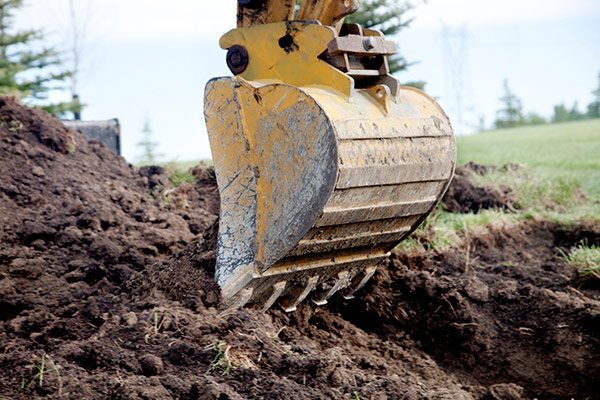Finest Dump Truck Companies in Ohio - Top-Rated Dump Truck Providers
Finest Dump Truck Companies in Ohio - Top-Rated Dump Truck Providers
Blog Article
Extensive Exploration: The Science Behind Superior Excavation Practices
The world of excavation techniques is a domain name where science intertwines with craftsmanship to discover the mysteries concealed beneath the planet's surface area. From ancient hand devices to contemporary hydraulic excavators, the advancement of excavation methods has actually been a testimony to human ingenuity and technical innovations. What truly sets remarkable excavation techniques apart is a deep understanding of geological principles, combined with the usage of cutting-edge tools and methods. By checking out the scientific research behind these practices, we can discover the secrets that lie beneath our feet and value the precision and knowledge that go right into every dig.
Evolution of Excavation Methods
Throughout history, the development of excavation strategies has actually played a vital duty in progressing building practices and historical explorations. From the primary tools made use of by our ancestors to the advanced equipment utilized in modern-day times, the development of excavation methods has actually considerably changed just how we come close to numerous tasks.
In ancient times, hands-on labor with basic tools such as shovels, pickaxes, and wheelbarrows was the key approach of excavation. This labor-intensive procedure limited the depth and range of excavations, commonly causing slow-moving progress and limited accessibility to particular sites. As civilizations advanced, so did the devices and methods used for excavation.
The Industrial Revolution marked a turning factor in excavation experiment the intro of steam-powered equipment. This innovation revolutionized the area, permitting for faster and extra considerable excavations. In contemporary times, modern technology plays a critical duty in excavation, with innovations like GPS systems, drones, and 3D scanning boosting accuracy and efficiency in the field. The development of excavation techniques remains to shape the way we develop, explore, and recognize the globe around us.
Duty of Technology in Excavation

The combination of advanced modern technology has fundamentally transformed the area of excavation, improving accuracy and effectiveness to unprecedented levels. Among the vital technical innovations that has significantly affected excavation practices is the use of general practitioner systems. These systems enable exact mapping of excavation sites, making it possible for operators to properly locate underground energies and structures. In addition, using telematics in excavation devices has actually enabled real-time monitoring of machine efficiency, bring about proactive upkeep and enhanced functional efficiency.
Additionally, the development of 3D modeling and simulation software program has structured the planning procedure for excavation tasks. Operators and designers can now envision the whole excavation process prior to beginning, maximizing and recognizing prospective challenges operations. In conjunction with this, the application of drones in excavation activities has promoted airborne studies, volumetric measurements, and website examinations with unequaled speed and accuracy.
Geological Concepts in Excavation
An understanding of geological principles is necessary for making sure the structural honesty and security of excavation websites. Geological variables play a vital duty in identifying the feasibility and security of excavation projects.
In addition, the geological structure of the area, including faults, fractures, and rock formations, need to be carefully analyzed to determine possible dangers and challenges. Digging deep into view near fault lines or unsteady rock developments can result in instability and potential dangers. By conducting extensive geological surveys and analysis, excavators and designers can develop methods to mitigate risks and guarantee the effective completion of excavation projects. Ultimately, including geological concepts right into excavation methods is critical for achieving secure, effective, and sustainable outcomes.

Newest Tools for Excavation
In the realm of excavation techniques, modern developments in devices have actually revolutionized the performance and precision of excavation processes. These drones can provide detailed aerial studies of excavation sites, providing real-time data on topography and possible dangers.
One more cutting-edge tool obtaining appeal is the execution of 3D printing innovation for producing personalized excavation equipment. This permits the production of specialized tools that are tailored to the particular needs of a job, increasing performance and lowering downtime.
Moreover, innovations in products scientific research have actually resulted in the growth of more powerful and a lot more sturdy excavation tools. lancaster trenching. Tungsten carbide-tipped excavator attachments, for example, offer premium performance in difficult ground problems, improving performance on-site
Science's Effect on Excavation Practices

Moreover, innovations in products scientific research have caused the development of more powerful, much more sturdy excavation devices and devices. As an example, making use of composite products in miners and shovels has boosted their performance and long life, inevitably enhancing efficiency on excavation sites. In addition, scientific study on dirt auto mechanics and geotechnical engineering has actually offered valuable understandings into dirt behavior, permitting excavation specialists to make informed decisions relating to excavation approaches and soil stabilization strategies. Generally, science remains to drive technology and improvement in excavation techniques, making excavation jobs much more reliable, affordable, and lasting.

Conclusion
To conclude, the evolution of excavation techniques has been considerably affected by advancements in technology and a much deeper understanding of geological principles. The most up to date tools and tools used in excavation have improved performance and accuracy in the field. The application of scientific understanding has actually substantially improved excavation practices, resulting in extra lasting and reliable techniques for excavating various types of materials.
In the world of excavation techniques, modern innovations in devices have actually revolutionized the performance and accuracy of excavation procedures. By leveraging clinical principles, the excavation market has actually been able to dramatically boost performance, accuracy, and security in excavation processes. GPR allows excavation groups to non-invasively check and map subsurface structures, energies, and prospective risks, enabling them to intend excavation jobs with better precision and decreased threat of mishaps.
Additionally, clinical study on dirt mechanics and geotechnical engineering has offered beneficial insights into soil behavior, allowing excavation specialists to make informed choices concerning excavation approaches and soil stablizing methods. Generally, scientific research continues to drive technology and improvement in excavation techniques, making excavation jobs extra efficient, affordable, and sustainable.
Report this page